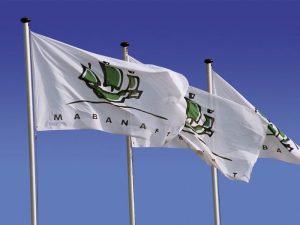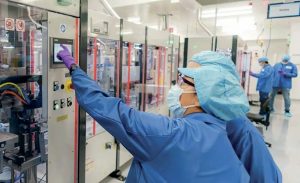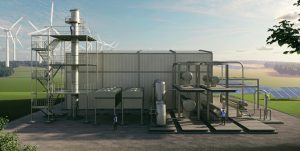
Press Release: Mabanaft and HIF Global sign agreement to accelerate e-Methanol adoption in the shipping industry
Agreement between Mabanaft and HIF Global for planned offtake of e-methanol for the shipping industry

Agreement between Mabanaft and HIF Global for planned offtake of e-methanol for the shipping industry

While green hydrogen and green ammonia promise to be important clean energy carriers in future, there are significant challenges to be overcome not only in production storage and transport, but also financially realising the project. Innovate technology from thyssenkrupp Uhde, embodied in standardised, pre-integrated, modularised plant can deliver low cost of ownership and de-risks execution.

Esben Sørensen and Glenn Rexwinkel of Plug Power review the safety aspects of integrating hydrogen production by electrolysis into existing ammonia processes. Novel safety risks associated with such changes are surmountable and the analysis presented shows that green ammonia production can be no more hazardous than traditional ammonia production.

Gasgrid Finland Oy has awarded Worley a four-year framework agreement with an option for extension until 2032, to provide owners engineering services for Gasgrid’s hydrogen pipeline system development in Finland. This 1,100 km long hydrogen pipeline system is expected to link major hydrogen production and offtake centres across Finland and enable the development of hydrogen export routes to neighbouring markets. Gasgrid says that the planned hydrogen pipeline system will support cost-efficient, reliable and secure renewable energy market development for the Nordic countries and elsewhere in Europe. Worley will provide the OE services primarily through Worley’s offices in the Netherlands and Finland with support from the Global Integrated Delivery (GID) team in India.

Johnson Matthey (JM) has signed an agreement with Bosch, a leading supplier to the automotive industry, to develop and produce catalyst coated membranes (CCM) for use in fuel cell stacks. JM’s high performance CCMs will be used in Bosch’s integrated, compact and scalable fuel cell power module for commercial vehicles, designed for longer distances.

Lithium sulphur battery manufacturer Lyten has signed agreements with California Sulphur Company, at the Port of Los Angeles, and a Port of Stockton company to supply US domestically sourced, industrial-grade sulphur to Lyten’s manufacturing facilities in San Jose, CA, San Leandro, CA, and its recently announced Reno, NV, “gigafactory”.

Days 2 and 3 of the CRU’s 38th Nitrogen+Syngas 2025 Expoconference turned to the technical sessions, organised in three parallel streams covering: green ammonia technology, nitric acid and ammonium nitrate, plant operations and reliability, urea technology, digitalisation, carbon capture, emissions reduction and sustainable fertilizer production, and fertilizer finishing.

Blue hydrogen has emerged as a crucial technology for decarbonisation as nations around the world work towards net-zero carbon targets. By decarbonising hydrogen production and exploring clean hydrogen sources we can fully harness the potential of hydrogen in the global energy transition. Johnson Matthey, Topsoe and Casale report on their strategies and advanced technical solutions for large scale blue hydrogen production.

Stamicarbon, in collaboration with KT Tech, has developed a cryogenic energy storage system, named GALCES , for green ammonia plants that addresses the intermittency challenges of renewable energy supply. The technology not only supports the sustainability goals of the ammonia production industry but also contributes to broader energy market stability and efficiency.

One of the key challenges of producing RFNBO (renewable fuels of non-biological origin) compliant ammonia is managing the intermittency associated with renewable energy sources for hydrogen production. Furthermore, the additional costs associated with managing this intermittency can be significant. In this article, Dr Solomos Georgiou of AFRY Management Consulting explores those additional costs as well as potential ways to achieve cost savings and make RFNBO-compliant ammonia production competitive against conventional ‘grey’ ammonia.